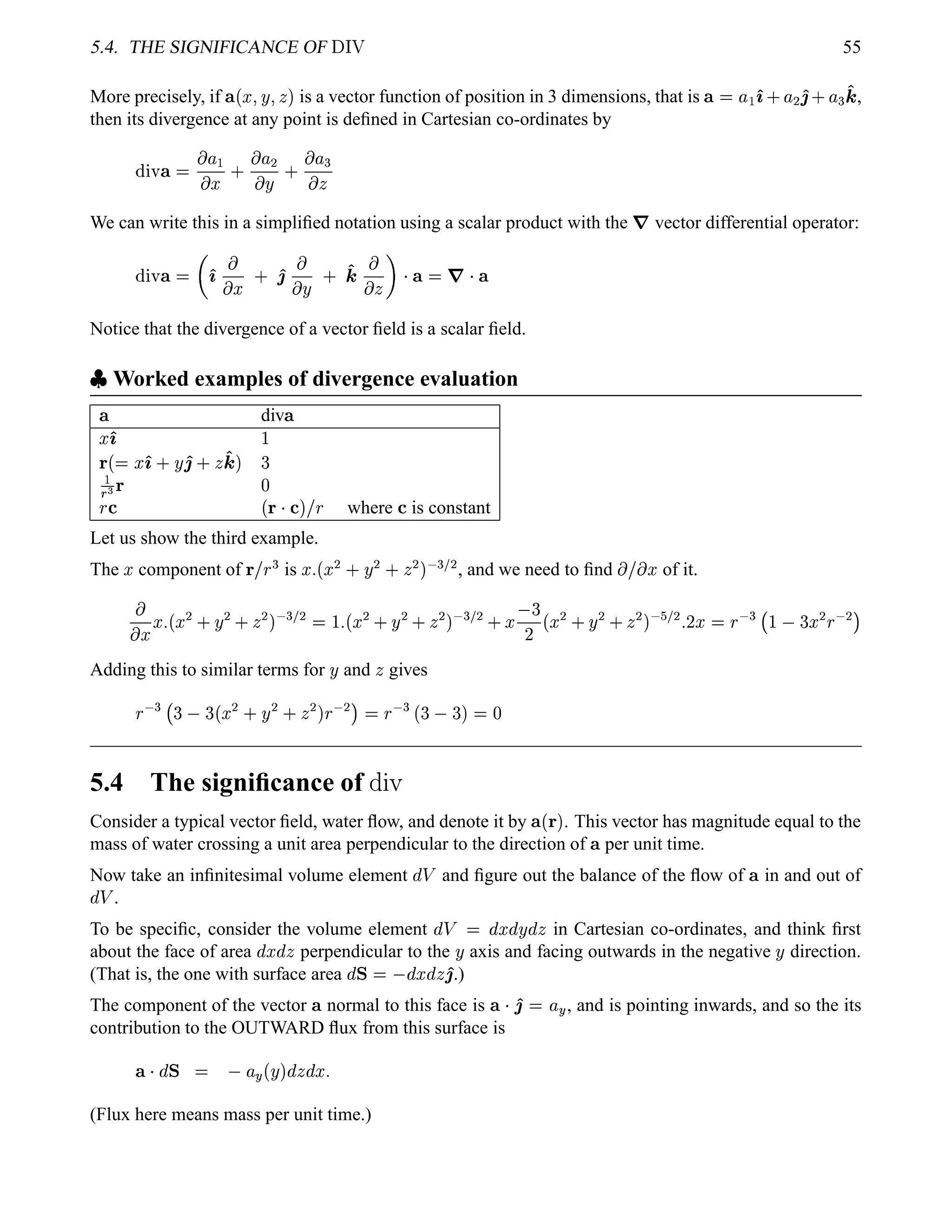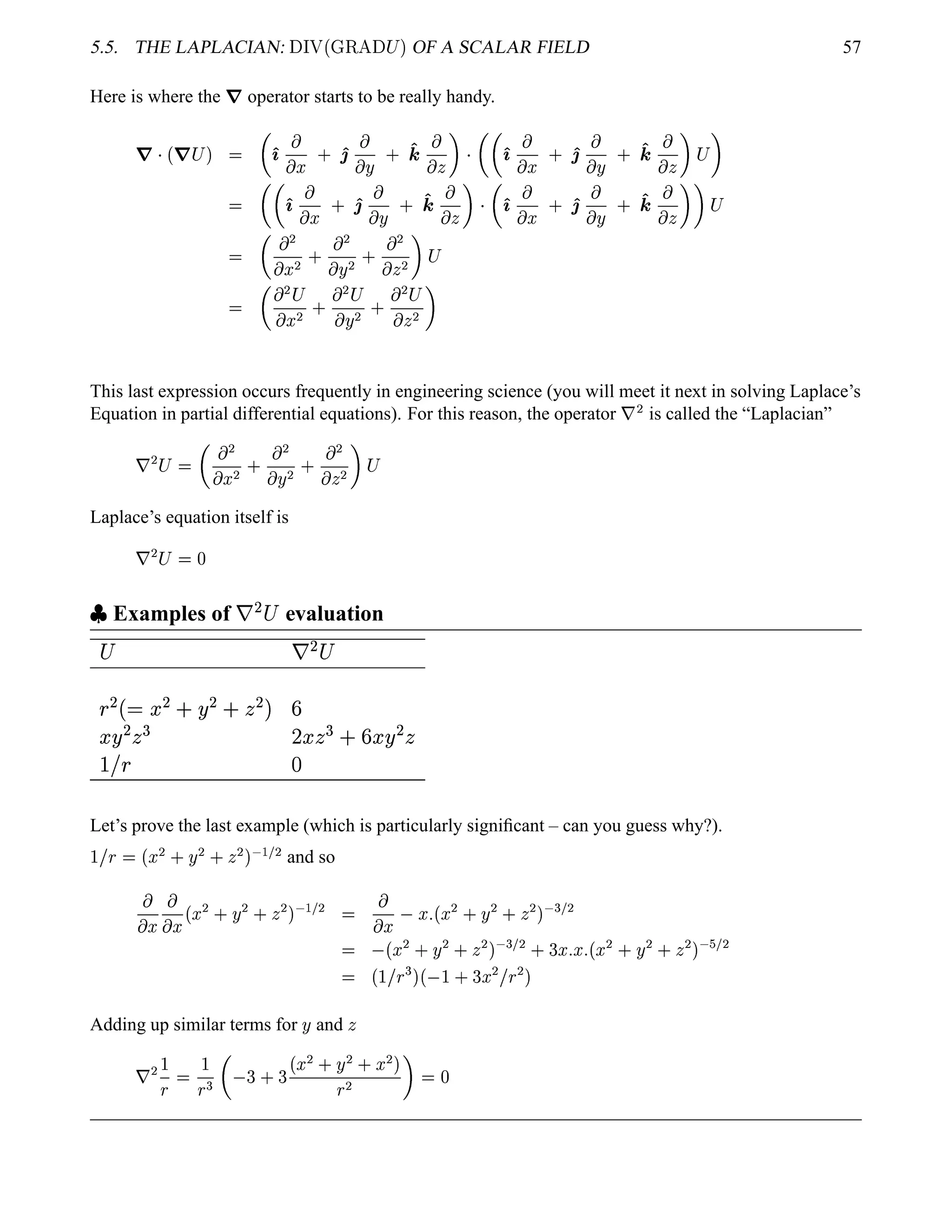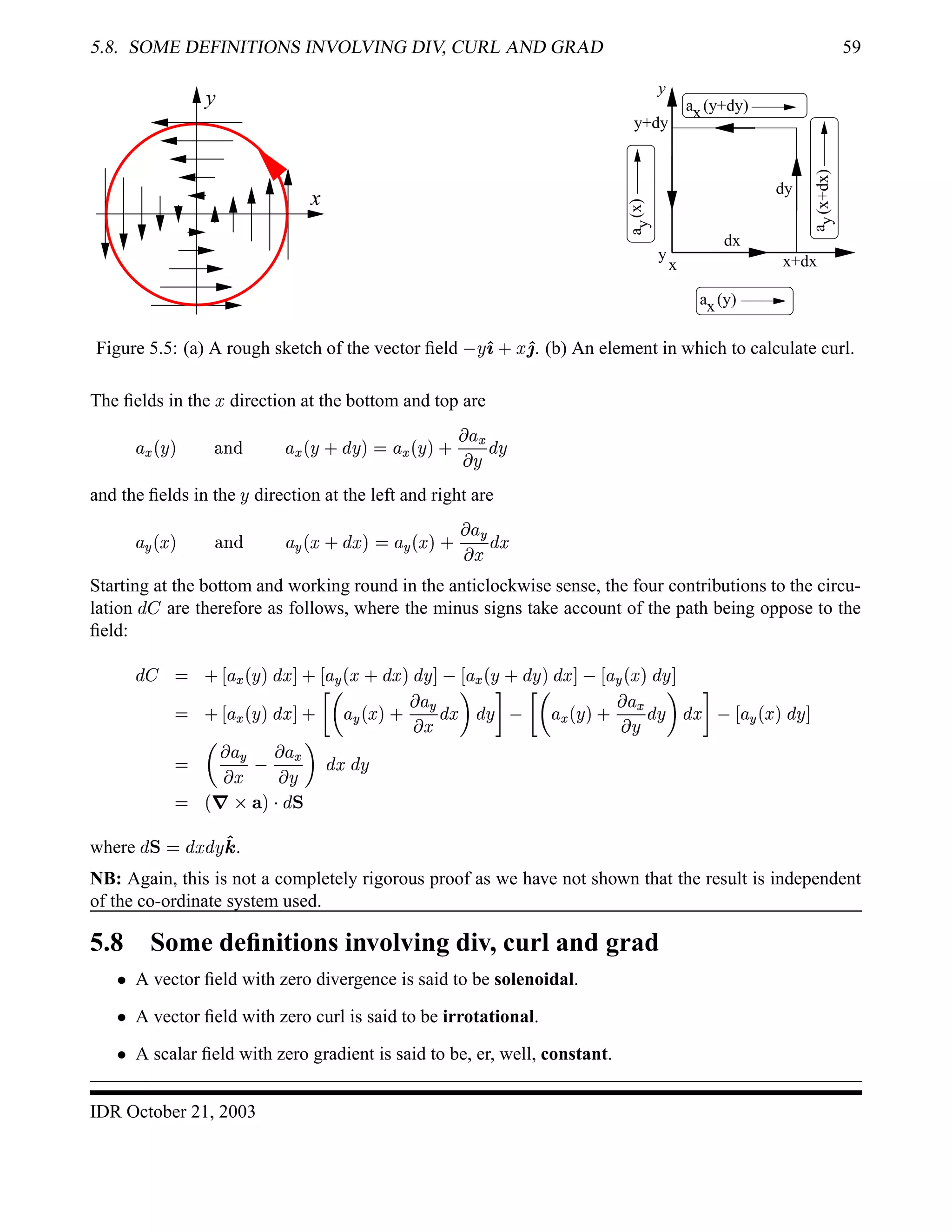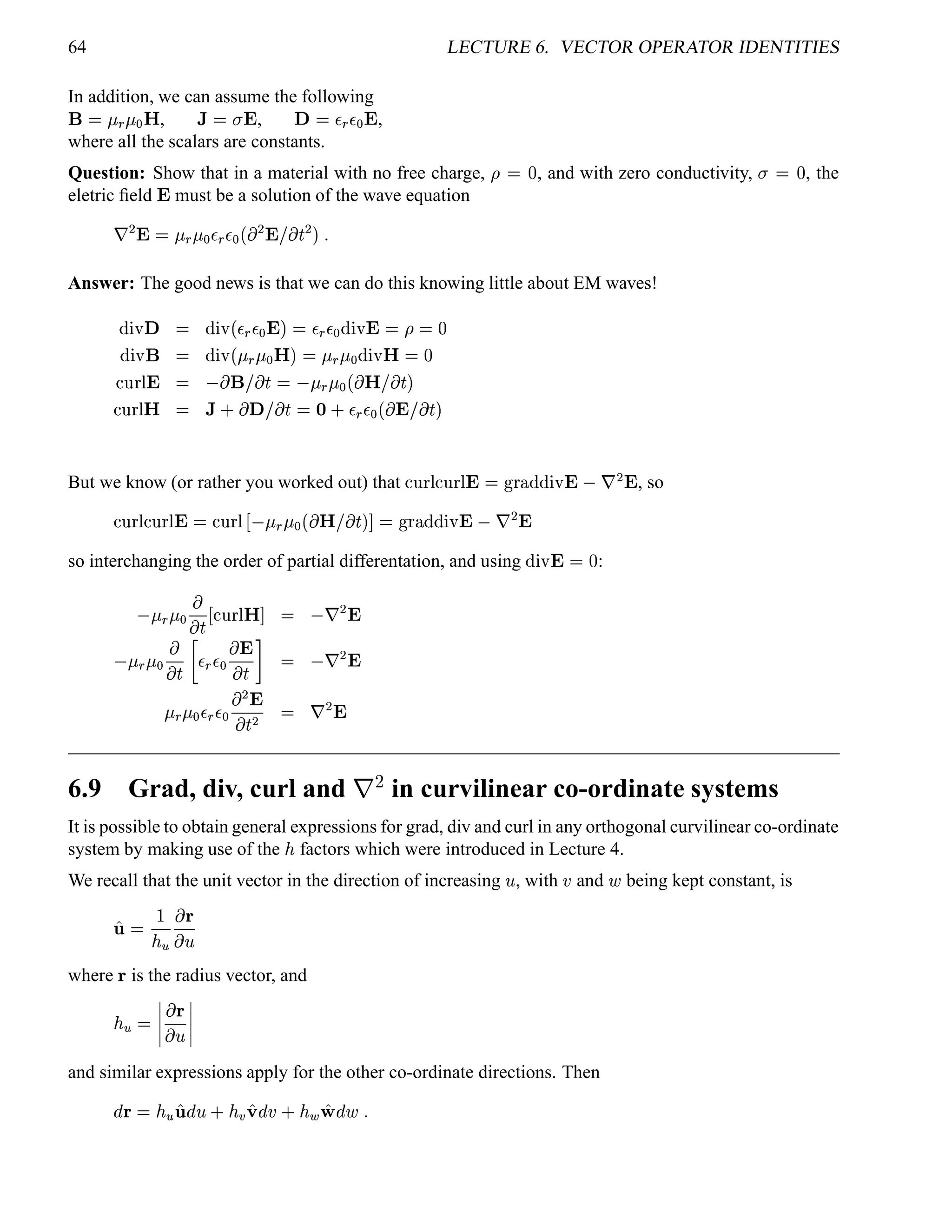The document introduces three vector field operators: the gradient, divergence, and curl. The gradient of a scalar field points in the direction of greatest change and represents the directional derivative. The divergence represents the flux generation per unit volume and is a measure of the efflux from an infinitesimal volume. The curl represents the circulation of a vector field around an infinitesimal loop or surface and is related to rotational properties of the field. Examples are provided to demonstrate calculating each operator.




















